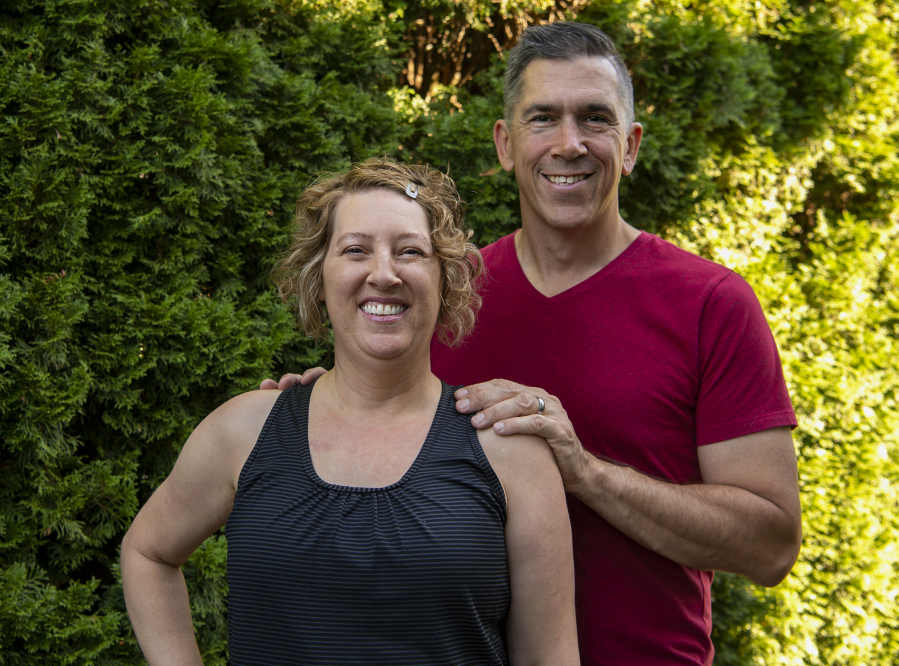You don’t have to tell all the people participating in today’s Girlfriends Run for a Cure event on the Vancouver waterfront that exercise is a great way to get and stay healthy.
But not long ago, exercise wasn’t recommended for breast cancer patients. When researcher Kerri Winters-Stone entered the field almost 20 years ago, she said, the conventional wisdom about cancer patients exerting themselves was: don’t.
“Since fatigue was such a common, debilitating symptom during cancer treatment, the clinical practice was to rest as much as possible,” said the scientist, who’s based at the OHSU Knight Cancer Institute in Portland. “Exercise may only exacerbate the fatigue and make you feel worse, maybe enough to stop the cancer treatment. So, slow down and conserve your energy.”
Then Winters-Stone met a ball-of-fire cancer survivor — a working nurse and former athlete — who refused to slow down, and who credited exercise with keeping her healthy.
Girlfriends run for a Cure
The charity event, which benefits Pink Lemonade Project and the Jaime Wyatt Miller Cancer Compassion Fund, begins at 9 a.m. today. If you haven’t pre-registered, get there as early as possible this morning to avoid a same-day registration bottleneck. Visit whyracingevents.com/girlfriends-run for all the details.
“By staying active, she was able to do better than people in the IV infusion unit who were sitting in their chairs,” Winters-Stone said. “She was one of the early trend-buckers who showed that exercise can provide real benefits.”
The new field of exercise oncology arrived at modest conclusions to begin with, confirming that exercise could manage symptoms such as fatigue and nausea, curb anxiety and promote better sleep. But then the work started getting deeper and more specific.
“We started treating cancer as a chronic illness, and exercise as a long-term management strategy” for symptoms that don’t end after treatment, as well as a way to improve overall quality of life, she said.
“There was much more rigorous investigation of whether exercise had direct benefits on tumors … or indirect benefits, like improving patients’ tolerance for treatment so they can get more treatment,” Winters-Stone said.
Exercise programs for cancer patients are not currently part of “standard care,” and not covered by insurance, but Winters-Stone believes research data will eventually get it there. She said the principle is no different than covering aerobic exercise programs for cardiac-rehabilitation patients because they can prevent future heart attacks.
“We are trying to amass enough evidence to suggest that exercise needs to be started at the point of diagnosis and phased into long-term management,” she said. “We are proving it can help people go through treatment and recovery as well as help prevent the cancer from coming back.”
According to the National Cancer Institute, a growing body of science associates regular exercise with less cancer recurrence and a better quality of life for cancer patients and survivors.
Like aspirin
Exercise is a little like baby aspirin, Winters-Stone said: It’s a general prophylactic that “prevents everything” by keeping the body fit, resilient and operating efficiently.
But targeted exercise can also have targeted results for cancer patients suffering specific treatment side effects, she added. For example, anti-hormone therapy can make bones brittle and increase the risk of fractures. And because it only takes one fall to damage the skeleton — or even the brain — cancer patients who’ve experienced a fall may give up on physical activity, which only makes them more frail and less resilient.
Osteoporosis drugs are one answer, but those can cause long-term problems too, Winters-Stone said. Better answers might be resistance exercises that specifically aim to stop bone loss in the hips and spine, she said, or improve balance and flexibility.
“We are teaching (patients) Tai Chi,” an ancient Chinese system of gentle, slow-moving, meditative exercises, she said. “It’s a very effective fall-prevention strategy for older adults. It really trains up your postural control.”
Winters-Stone said she’s currently compiling the results of a clinical trial that examined how three different exercise regimens — Tai Chi, strength training or simple stretching — benefited a group of nearly 500 women, most of whom were six months post chemotherapy.
“That’s typical of the trials we do,” she said. “They are being used to formulate evidence-based exercise guidelines for cancer survivors.”
Guidelines and realities
The whole idea of exercise for cancer patients is just making it into the mainstream now, Winters-Stone said.
“In 2018, the American College of Sports Medicine was the first organization to issue guidelines for people with cancer,” she said. “Their main message was that exercise is safe and well tolerated. It can help. It’s not like cancer has altered people’s fundamental capacity to do exercise.”
In fact, those guidelines for people with cancer are no different than the guidelines for all adult Americans set by the Department of Health and Human Services: We all should try for at least 150 minutes of moderate-intensity aerobic exercise per week (that’s two and a half hours weekly, or just under 22 minute daily), plus 12 to 15 repetitions of strength-building resistances (like lifting weights), twice per week.
But, Winters-Stone added, guidelines are just that. Slow and easy is always the way to start.
“When you take someone who’s just been smacked down by cancer treatment, it’s really hard to get started,” she said. “If we can help them find a way that works for them, that’s great.”
Social boost
One way that works well for many people is exercising with a spouse, partner or buddy. The Knight Cancer Institute developed a trial program called Exercising Together after researchers like Winters-Stone noticed the strong friendships that prostate cancer patients formed with assigned exercise partners — and how those friendships reinforced more exercise and greater health benefits, both physical and emotional.
“We had a buddy system and we noticed these really close relationships developing,” Winters-Stone said. “We were also getting feedback that patients wished their spouses could get involved.”
The spouses and partners of cancer patients can often end up neglected even as they shoulder a heavy burden too, she noted.
Exercising Together at OHSU is now enlisting breast cancer survivors and their spouses for its ongoing study of all the benefits that accrue — from strengthened bodies to strengthened relationships — when couples work out together, or separately, twice a week for six months.
“We’re looking to see if it matters if they exercise together, or both exercise the same but separately,” Winters-Stone said. “Do we have better outcomes when the partners are together?”
Many more scientists are eager to know the findings, she said.
“We just got a large grant from the National Institutes of Health to further test the outcomes and impacts of this partner approach,” she said.
You don’t need to wait for a large grant. Test Winters-Stone’s theory that exercising with a partner makes it more fun and ultimately more beneficial by reaching out for an exercise companion — whether a spouse, a friend or even a class. Start a new walking, jogging or gym routine together, she suggested.
“Start small and build the habit,” she said. “If you can hang in there for two to three months, I can almost promise, you’ll notice things changing. Two to three months isn’t that long.
“You’ll see that you’re being successful,” she said, “and success is a boost all by itself.”




